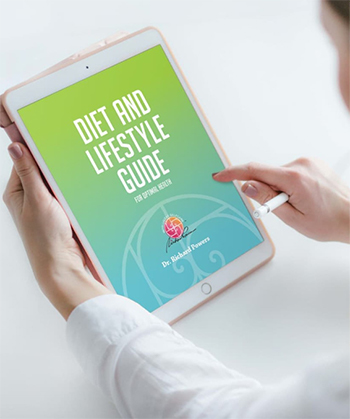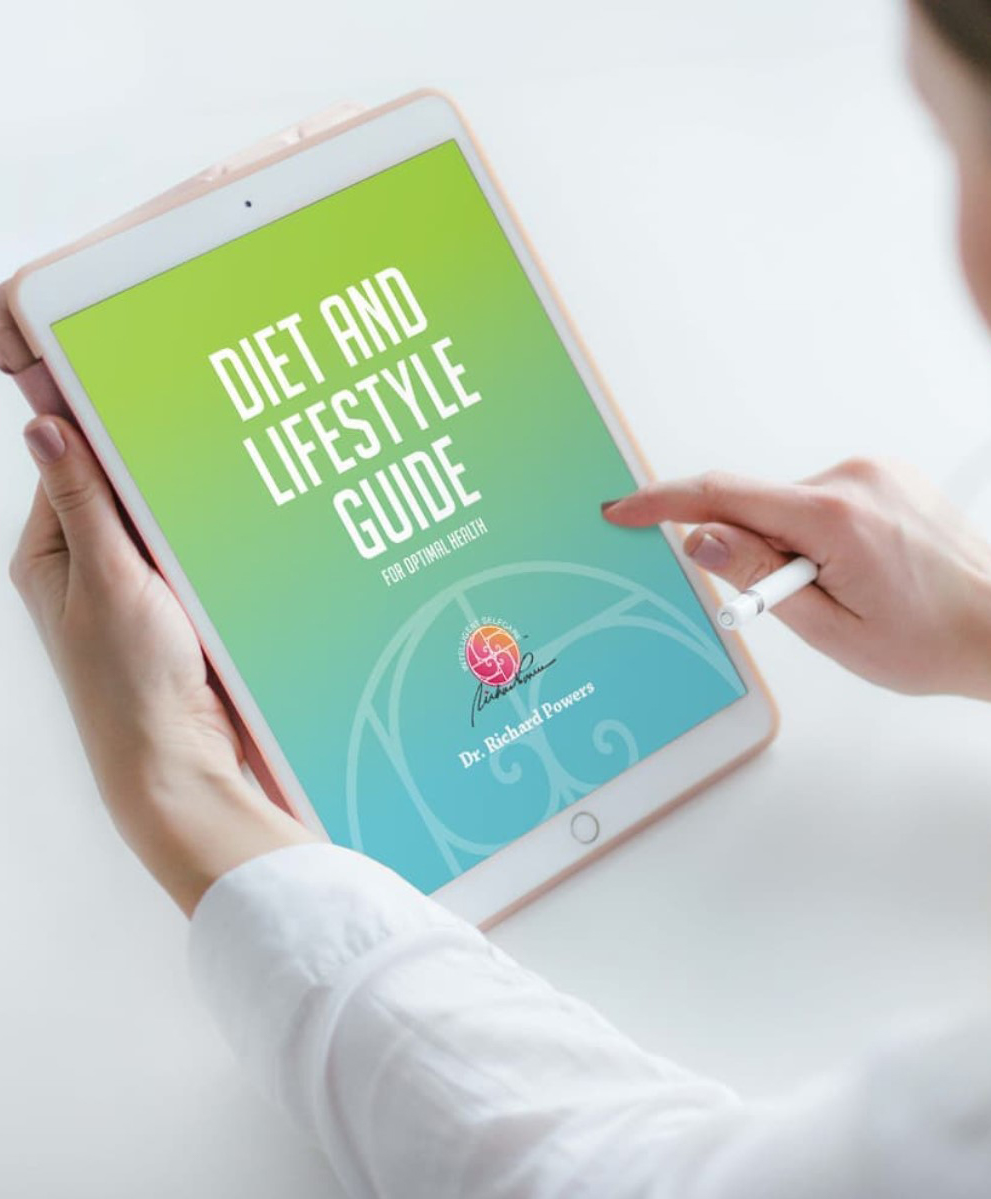
by Dr. Richard Powers
Fasting – done correctly – can help improve your resilience, stamina, mood, clarity, focus, and shape, boost your immunity and longevity, all while lowering inflammation, pain, and your risk of cancer, heart attacks, strokes, and Alzheimer’s.
Do you often feel tired, unwell, or in pain? Experience bouts of anxiety, depression, or memory lapses? Have some digestive challenges, skin rashes, or allergies? Although not a cure-all, implementing one or more types of fasting to your routine will likely help.
If you generally feel well, fasting can help you stay that way, help your immune system prevent infection and cancer, and extend your healthspan, as well.
Until recent times – evolutionarily speaking – food was periodically unavailable. To accommodate times of food scarcity, our physiology has evolved to adapt so we could survive and even thrive without periods of food intake.
During periods of “fasting” (not eating):
So, what’s the problem?
It is no longer common for (most) people to go for extended periods of time without consuming food, and thus lose the inherent healthful benefits gained from fasting.
Generally, there are two obstacles to fasting.
Nowadays food in our country is readily available most of the time to most people. And, the “food” that is easily accessible – almost 24/7 in many communities – consists of heavily preserved/treated, sugar-rich, nutrient-poor, empty non-food products.
In addition, many people have become “addicted” to food – especially this non-food – and shy away from the concept of fasting.
Part of the reason for one’s fear of fasting centers around their (often unconscious) “obsession” for food, as the most readily available food choices also happen to be the most addictive, which subsequently drives one to eat more of it, more often. For example,
- Sugar has been equated to be as addictive as cocaine
- Dairy products and wheat are metabolized to caseo- and gluteo-morphines, both of which bind with opiate receptors in the brain, making us (temporarily) feel good, and hence driving our craving for these foods.
Case in point … who doesn’t crave some or all of these … pizza, lasagna, ice cream, pie, candy, cookies, baked goods, sweetened cereals, “wheat” bread/carbs, or bagels and cream cheese?!
We, as human beings, are hard-wired to feel “good.” Then there is the fact that “everyone is fighting a tough battle,” as we are (or have been) dealing with unresolved grief, unrequited love, gripping fears, or unfulfilled dreams. As a result, it is easy to become addicted to anything – including food – that helps ease our emotional pain.
Whether due to non-stop access to food, to one’s biochemical addiction to certain foods, or because we rely on food as a fundamental source of satisfaction or emotional pain relief, skipping or delaying meals no longer occurs for most people most of the time. (Of course, with the homeless or impoverished as the obvious exceptions.)
As a result, we miss the many benefits associated with fasting – more energy, improved weight and shape, better memory and focus, less pain – and experience the consequences of not fasting, like increased disability, accelerated aging, infection vulnerability, and a reduction in our quality of life and healthspan.
The solution
Continue to pursue wholesome solutions to soothe your soul and nurture yourself, many of which are listed in my book, Foundations for Creating Optimal Health.
Then …
- Learn how to make it easier to fast and still retain the numerous benefits.
- Then, intentionally schedule (extended) periods of time when you are not eating, that is, sufficiently to reap the rewards of fasting.
Two Basic Types of Fasting:
Although there are many names and permutations of fasting, it generally falls into one of two categories – time-restricted feeding and intermittent fasting.
1) Time-restricted Feeding:
Simply put, this is type of fast is about restricting your “window” of eating by extending the time overnight that you don’t eat, that is, to a minimum of 12 hours and up to 14-16 hours.
Or, said another way, you fast by restricting the period of time that you do eat. For example, eating only between 8 AM and 6 PM – a 10-hour eating window – amounts to a 14-hour, overnight fast.
It is safe for most people to slowly work up to 12 to 14-hour daily fast, although there are some exceptions – see fasting precaution noted below.
2) Intermittent Fasting:
This type of fasting is usually associated with abstaining from eating food and only drinking pure water, usually for a period of 1 or more days. In addition to water, research suggests that consuming a tasty Fasting Bar (3 flavors) for breakfast, as well as some black coffee, and/or some green/black tea (without sweeteners of ANY kind) during the day will not negatively impact the effectiveness (and resulting benefits) of the fast.
Several of the key benefits of this type of fasting kick in on days 3+ of the fast, but I generally don’t recommend fasting for more than about 5 days for most people as it often results in unanticipated and unwelcomed consequences, like muscle wasting, excessive release of toxins from “safe” storage depots (in fat cells), and more.
There are many variations of an intermittent fast – 2 days eating and 1 day fasting, 5 days eating and 2 days fasting, as well as juice “fasting” (only consuming Fresh-Pressed vegetable and/or fruit juices), and others. However, please beware, many fasting approaches I have found to be either impractical, unsustainable, or potentially harmful – physically or mentally. (Please refer to the fasting precaution noted below.)
The 5-day Prolon Fasting-Mimicking Diet
Although a water-only fast one day a week can definitely be beneficial, the intermittent fasting approach that I found to be the safest, most beneficial, while also being practical, is the science-backed 5-day Prolon Fasting-Mimicking Diet. During the Prolon fast, you get to enjoy some food (included within the Prolon “kit”), yet still maintain your body in a fasting state.
During the 5 days of this highly researched fast, you consume small quantities of certain foods (all pre-packaged in a “kit”) that have been shown to not interfere with the outcome of the fast – Fasting Bars, olives, crackers, and a variety of soups.
And, although food cravings and muscle wasting are both common with extended water and/or juice-type intermittent fasts, the 5-day Prolon Fasting-Mimicking Diet approach actually helps keep your appetite at bay and slows muscle loss.
Bottom line: With the Prolon fast you get to minimize the common fasting pitfalls while still optimize the numerous fasting health benefits.
Fasting precaution:
If you have a medical condition and especially if you are taking any prescription medication, consult your physician prior to initiating any type of fasting, and if approved, it is best under supervision by a qualified practitioner.
Fasting Implementation Tips:
Improve your resilience, stamina, mood, clarity, focus, and shape (by burning more fat around your “belly”, i.e., visceral adipose tissue), boost your immunity and longevity, all while reducing inflammation and pain, and lowering your disease risks (like cancer, heart attacks, strokes, Alzheimer’s, etc.), by:
If you want to feel, look, and/or function better – be it your weight and shape, energy levels, brain function, or digestive challenges – or, if you want to help ensure your continued well-being, I invite you to begin extending your fasting time between dinner and breakfast, and to incorporate a 5-day Prolon Fasting-Mimicking Diet into your routine.
Over time, you will feel (and see) the difference, and your body and mind will thank you for it!
![]()
Get your 5-day Prolon Fasting-Mimicking Diet “kit” and receive an additional 20% discount when you click here. (Note the additional 20% discount is applied at CHECKOUT.) Keep this link for future orders.
Learn more about the 5-day Prolon Fasting-Mimicking Diet (download PDF)
Purchase any of the healthy and tasty flavors of Fasting Bars – honey nut, chocolate chip, and coconut macadamia here.








